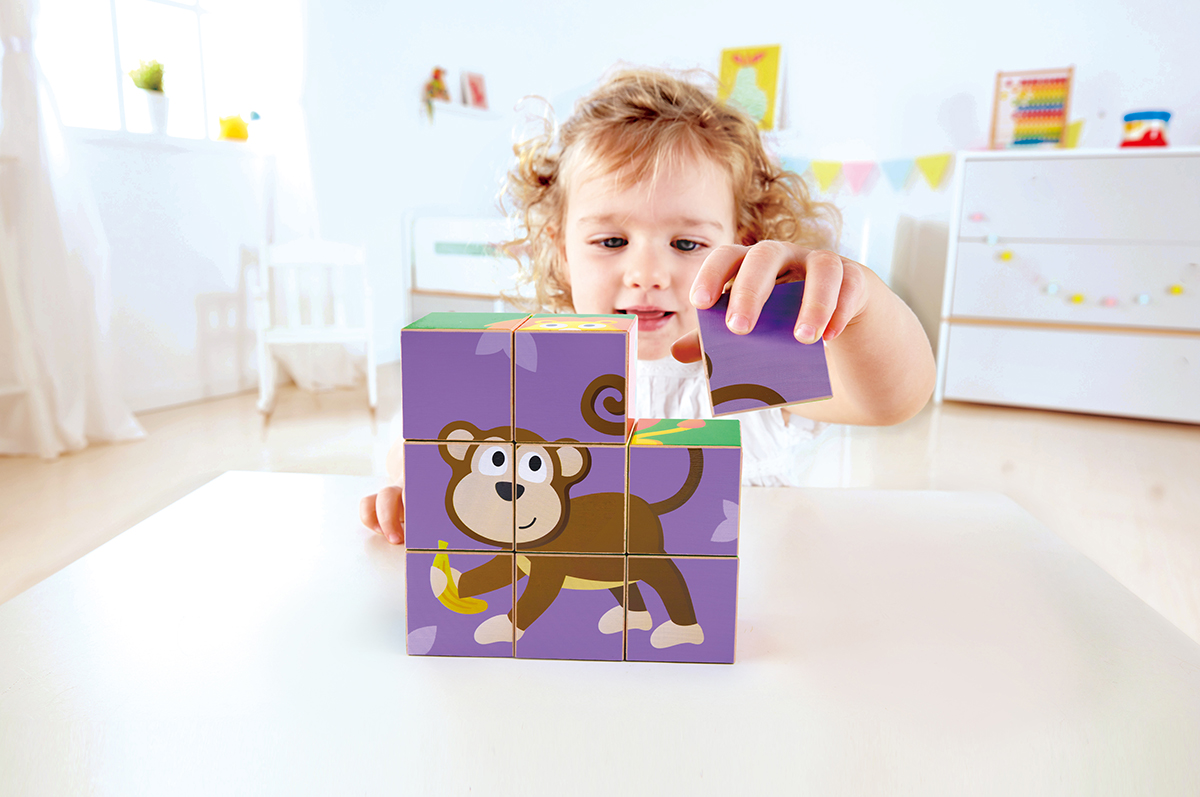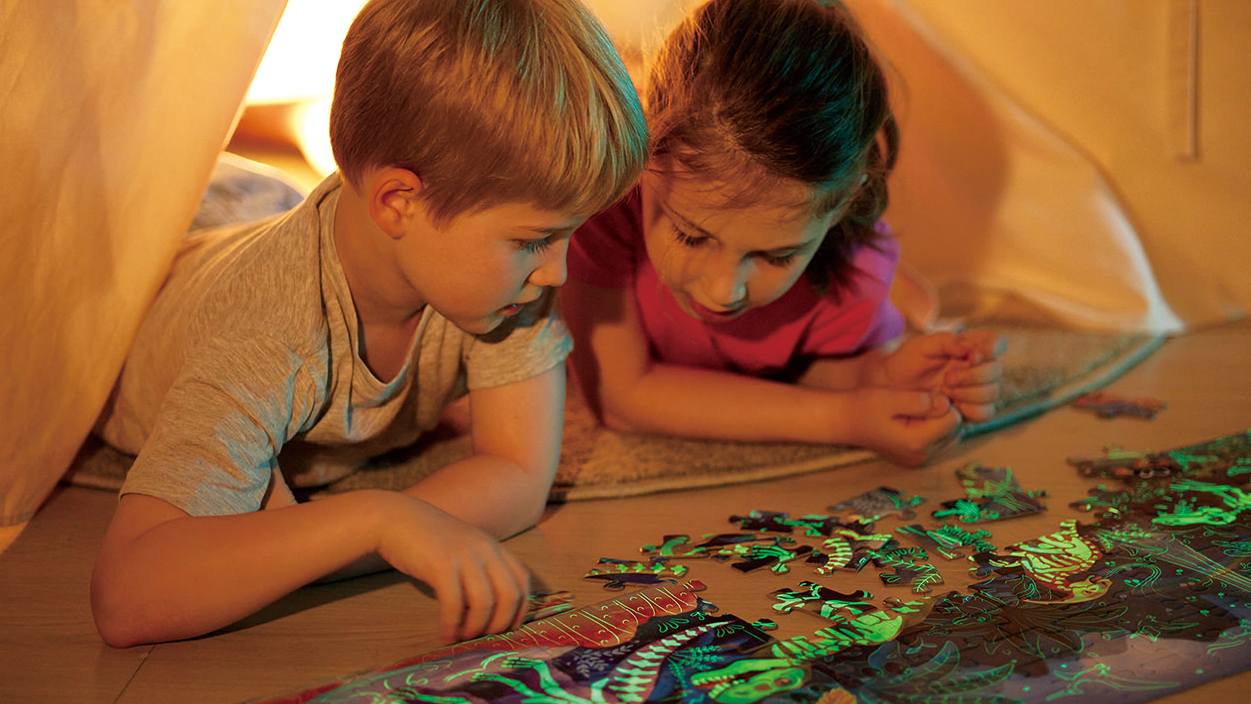Puzzles are a staple in children’s toys and besides being incredibly fun, they’re essential for promoting problem-solving skills. You might wonder how important that really is, but problem-solving is one of the most crucial aspects of a child’s development. Learning how to define the problem and approach it step-by-step, no matter where they are, can significantly impact the quality of a child’s relationships and life.
Learning how to break a problem down into manageable parts and deciding on the best course of action shapes a child’s cognitive development. Not only do these skills help them as they grow, but they also lay the foundation for effective problem solving in adulthood. And yes, you can help improve your child's ability to solve problems by introducing them to puzzles!

The process of solving puzzles mirrors real-life problem-solving situations, where children explore multiple options and consider both the big picture and smaller details. So, what does problem-solving look like as your child grows? We’ve simplified the basics into key developmental stages, showing how you can nurture these skills with puzzles.
Trial & Error: One of the earliest ways children develop problem-solving skills is through simple trial and error, particularly when working with puzzles. As they attempt to fit different pieces together, they learn by trying various combinations, recognising which pieces don’t fit and which ones do. This process encourages them to experiment, think critically, and persevere.
Cause & Effect: They also start understanding cause and effect relationships, like pushing a button on a toy to plays a sound. Through this stage, toddlers learn to identify patterns, experiment with different problem-solving methods, and test multiple potential solutions. They move from basic shapes to puzzles that require them to think about abstract concepts and how each piece fits into the big picture.
Enhancing Hand-Eye Coordination: Manipulating puzzle pieces or large objects requires infants to coordinate their hand movements with what they see. As they try to grasp and move objects, they strengthen their hand-eye coordination, which is essential for solving physical tasks and puzzles in the future.
Developing Memory: As infants play with puzzles and other toys, they begin to develop memory skills. They start to remember where certain pieces go or how specific actions lead to desired outcomes, such as recalling which shape fits into a particular hole. This growing memory helps them solve problems more efficiently over time, as they retain and apply previous experiences to new challenges.
Simple Problem Solving: At this age, toddlers begin to tackle basic problems, such as fitting shapes into a shape sorter or matching puzzle pieces. They start to understand how objects relate to each other through trial and error, developing spatial awareness and critical thinking. As they persist in solving these problems, toddlers build confidence and learn to approach challenges methodically.
Imitation: Toddlers are keen observers and natural imitators. One of the most effective ways they learn problem-solving skills is by watching and imitating the actions of others, particularly adults, caregivers, or older children. Whether it’s copying how someone stacks blocks or solves a simple puzzle, toddlers begin to mimic these behaviours, which allows them to learn new strategies.
Experimentation: They can also begin experimenting with different ways to solve a problem, like stacking blocks to build a tower or stacking books to build the same tower – both are towers, just built differently. Through this stage, toddlers learn to recognize patterns, experiment with different problem-solving techniques, and test out multiple solutions. They move from basic shapes to puzzles that require them to think about abstract concepts and how each piece fits into the overall picture.

Asking Questions: Preschoolers enter the curious “why” phase, where they constantly ask questions to understand how things work. While these questions may seem repetitive or even annoying, they are crucial for developing problem-solving skills. By asking “why,” children begin to break down problems and look for explanations, which fosters critical thinking and cognitive development.
Multiple Solutions: At this stage, children start to recognise that problems can have more than one solution. Whether it’s completing a puzzle, building with blocks, or figuring out how to share with friends, they begin to understand that different approaches can lead to the same goal. This realisation sparks creative thinking and encourages them to explore multiple options.
Planning: Preschoolers begin to develop the ability to plan their actions, though not in detailed steps. For example, when working on a puzzle, they might decide which piece to try first or how to group similar pieces together. This early form of planning helps children start to think ahead, anticipate outcomes, and approach tasks with a basic strategy.
Logical Thinking: As their cognitive abilities grow, preschoolers start using logical thinking to solve problems. They begin to understand sequences, cause and effect, and the logical order of events, such as putting together a story or recognising that certain actions lead to specific outcomes.
Collaborative Problem Solving: With their growing socialisation skills, preschoolers begin to learn the value of teamwork in solving problems. Whether working on a group project in preschool or playing with friends, they discover how sharing ideas and working together can lead to better solutions. Collaborative problem-solving teaches them to communicate effectively, listen to others, and consider multiple perspectives.
Abstract Thinking: Abstract thinking is a more mature way of thinking, it’s where a child sees their answer beyond the on experiences that have happened. For example, if a child picks up a small puzzle piece, abstract thinking will help them to recognise that this piece should go in a small gap, whereas a younger brain would try all the gaps until the small piece fits.
If you’ve enjoyed this and are looking into puzzles, why not check out our other blog that’s packed with puzzle recommendations based on your child’s age – “Choosing the best puzzle for your child”
Puzzles offer much more than entertainment; they are valuable tools for promoting problem-solving abilities and cognitive development. By challenging children to think critically, plan ahead, and explore multiple solutions, puzzles help nurture essential skills that will benefit them throughout their lives.
The process of solving puzzles encourages effective communication, helps children learn how to work with others, and fosters creative problem-solving.
Whether they are solving puzzles at home or working through real-life challenges, children develop a robust set of skills that prepare them for future success.
